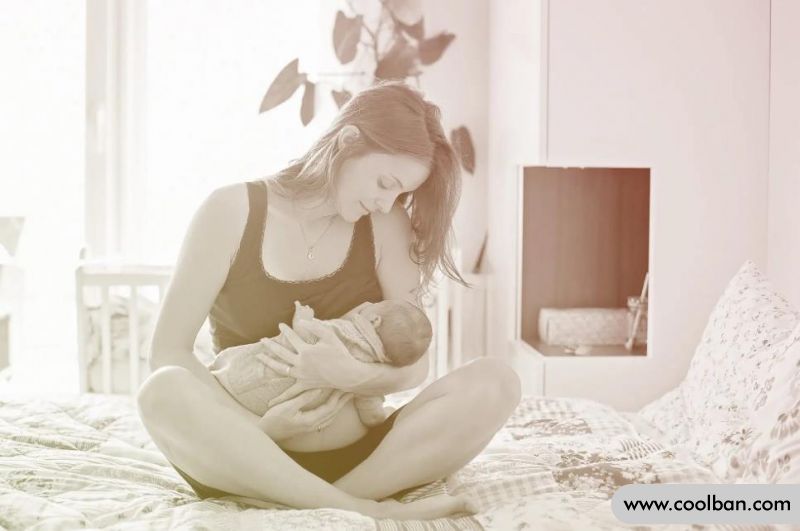Nursing methods for newborn umbilical cord
2022-04-28
While still in the womb of the mother, the umbilical cord is the bridge between the fetus and the mother. After the baby is born, the nurse will cut the end close to the baby, leaving the umbilical cord stump. Newborn umbilical cord care is not an easy task. Once this "injured" pit is not taken care of, it will invite diseases such as tetanus and sepsis. Your baby's best defense for umbilical cord care is to wipe and disinfect the umbilical fossa with alcohol every day, and change the navel sticker frequently. It is expected that the stump will fall off automatically in about 1-2 weeks, and you will see the baby's beautiful belly button officially formed!

Newborn umbilical cord nursing measures
After your baby is born, umbilical cord care is very important because the umbilical cord is the gateway for bacteria to enter your baby's body. So, how to properly care for the umbilical cord? Are there any precautions? Let's talk about the care of the newborn's umbilical cord.
Nursing method 1: The umbilical cord stump will generally fall off on its own within 1 week after the baby is born
After the baby is born, the medical staff will cut the umbilical cord and use an umbilical cord clip or valve core to clamp the umbilical cord. After 48 hours, the medical staff will remove the clip, and the umbilical cord stump will dry and harden, 2-3cm above the skin, and the umbilical cord stump usually falls off naturally within 1-2 weeks after the baby is born.
Nursing method 2: Baby umbilical cord nursing principles - keep it clean and dry
Normally, your baby's umbilical cord shrinks and shrinks. Keep the umbilical cord dry and it will fall off faster.
Before the umbilical cord falls off, parents are advised to keep the umbilical cord clean and dry every day. Unless there are special circumstances, disinfectants are generally not used, but if the sanitary conditions are not good, alcohol can be used for disinfection.
Nursing method 3: Natural shedding of the umbilical cord stump is best for the baby
During the healing process of the baby's umbilical cord stump, some parents may feel in the way, worry that it will rub against the baby's skin, and try to trim the umbilical cord stump by themselves. As everyone knows, this will affect the healing of the baby's umbilical cord stump, and even cause secondary damage. Therefore, it is best to let the baby patiently wait for the umbilical cord stump to fall off naturally.
Nursing method 4: 5 precautions for umbilical cord care
Note 1: When parents clean the umbilical cord of their baby, they must wash their hands first.
Note 2: The umbilical cord is exposed when putting on diapers for the baby.
Note 3: When bathing the baby, the water should not cover the umbilical cord, and avoid being splashed by water.
Note 4: Do not use talcum powder on the umbilical cord stump for drying, to avoid inflammation of the baby's umbilicus and granulation.
Precautions 5: If the baby's umbilical cord has these conditions, pay attention to seek medical attention in time: there is a yellowish discharge from the umbilical cord; the skin at the bottom of the umbilical cord is red; when it touches the umbilical cord, the baby begins to cry; It hasn't fallen off by 3 weeks.

Newborn umbilical cord care
The umbilical cord is the link between the fetus and the placenta, and is the channel through which the fetus absorbs and excretes maternal metabolites. After the baby is born, the original meaning of the umbilical cord is lost. Therefore, after the baby is born, the doctor will cut the end of the umbilical cord near the baby, leaving a small stump of the umbilical cord. It takes about a week for the umbilical cord to fall off the root, and the cut stump of the umbilical cord is very susceptible to bacterial infection for the baby, so the umbilical cord needs careful care.
Neonatal umbilical cord care should pay attention to the following aspects:
Note 1: Pay attention to waterproofing
In the process of caring for the umbilical cord, parents should pay special attention to keeping the umbilical cord dry and not getting wet with diapers or other items. If your baby's umbilical cord cloth is found to be wet, it should be changed immediately. Do not touch or wipe your belly button with dirty hands or a dirty cloth. Do not cover the navel with a diaper to prevent urine or feces from contaminating the navel wound.
Especially in the bath, if the baby's umbilical cord is wet, it should be dried with a cotton swab before feeding. Don't let your baby soak in the bathtub until the umbilical cord falls off. You can wash the upper body first, then dry it and then wash the lower body.
Note 2: Pay attention to observation
Parents should be closely monitored for bleeding within 24 hours after cord ligation. Some newborns may have a small amount of fluid or blood oozing from a loose umbilical cord. If you find that the gauze covering the umbilical cord is contaminated with blood or soaked, you should immediately ask your doctor to re-sterilize the ligature.
Note 3: Pay attention to disinfection
(1) After bathing every day, disinfect with 75% alcohol, and wipe from the center of the umbilical root to the surrounding in a spiral shape, do not wipe back and forth, so as not to bring the bacteria on the surrounding skin into the umbilical root.
(2) After the umbilical cord of the newborn baby falls off, there will be a layer of scab at the root. After the scab falls off, water or rice soup-like liquid will exude locally. At this time, parents can wipe with a sterile cotton swab dipped in 75% alcohol.
Note 4: Special circumstances
If the umbilical root has granulation, purulent secretion, redness, swelling, and peculiar smell, and the umbilical chakra is red and swollen, it means that omphalitis has occurred, and you should seek medical attention as soon as possible to prevent the disease from getting worse.

What should I do if the umbilical cord of the newborn does not fall off
After the baby is born, the umbilical cord is tied, and the stump turns brownish-white a few hours later, then gradually dries, thins, and turns black, and eventually falls off.
Under normal circumstances, the time of umbilical cord shedding for most newborns will vary according to the baby's condition, and it will usually fall off 1-2 weeks after birth. If the baby's umbilical cord has not fallen off after 2 weeks, carefully observe the condition of the umbilical cord. As long as there is no sign of infection, such as no redness, suppuration, and no large amount of fluid leaking from the umbilical fossa, parents do not need to worry too much. If there is any abnormality, it is recommended to take the baby to the hospital for treatment.

Newborn umbilical cord nursing measures
After your baby is born, umbilical cord care is very important because the umbilical cord is the gateway for bacteria to enter your baby's body. So, how to properly care for the umbilical cord? Are there any precautions? Let's talk about the care of the newborn's umbilical cord.
Nursing method 1: The umbilical cord stump will generally fall off on its own within 1 week after the baby is born
After the baby is born, the medical staff will cut the umbilical cord and use an umbilical cord clip or valve core to clamp the umbilical cord. After 48 hours, the medical staff will remove the clip, and the umbilical cord stump will dry and harden, 2-3cm above the skin, and the umbilical cord stump usually falls off naturally within 1-2 weeks after the baby is born.
Nursing method 2: Baby umbilical cord nursing principles - keep it clean and dry
Normally, your baby's umbilical cord shrinks and shrinks. Keep the umbilical cord dry and it will fall off faster.
Before the umbilical cord falls off, parents are advised to keep the umbilical cord clean and dry every day. Unless there are special circumstances, disinfectants are generally not used, but if the sanitary conditions are not good, alcohol can be used for disinfection.
Nursing method 3: Natural shedding of the umbilical cord stump is best for the baby
During the healing process of the baby's umbilical cord stump, some parents may feel in the way, worry that it will rub against the baby's skin, and try to trim the umbilical cord stump by themselves. As everyone knows, this will affect the healing of the baby's umbilical cord stump, and even cause secondary damage. Therefore, it is best to let the baby patiently wait for the umbilical cord stump to fall off naturally.
Nursing method 4: 5 precautions for umbilical cord care
Note 1: When parents clean the umbilical cord of their baby, they must wash their hands first.
Note 2: The umbilical cord is exposed when putting on diapers for the baby.
Note 3: When bathing the baby, the water should not cover the umbilical cord, and avoid being splashed by water.
Note 4: Do not use talcum powder on the umbilical cord stump for drying, to avoid inflammation of the baby's umbilicus and granulation.
Precautions 5: If the baby's umbilical cord has these conditions, pay attention to seek medical attention in time: there is a yellowish discharge from the umbilical cord; the skin at the bottom of the umbilical cord is red; when it touches the umbilical cord, the baby begins to cry; It hasn't fallen off by 3 weeks.

Newborn umbilical cord care
The umbilical cord is the link between the fetus and the placenta, and is the channel through which the fetus absorbs and excretes maternal metabolites. After the baby is born, the original meaning of the umbilical cord is lost. Therefore, after the baby is born, the doctor will cut the end of the umbilical cord near the baby, leaving a small stump of the umbilical cord. It takes about a week for the umbilical cord to fall off the root, and the cut stump of the umbilical cord is very susceptible to bacterial infection for the baby, so the umbilical cord needs careful care.
Neonatal umbilical cord care should pay attention to the following aspects:
Note 1: Pay attention to waterproofing
In the process of caring for the umbilical cord, parents should pay special attention to keeping the umbilical cord dry and not getting wet with diapers or other items. If your baby's umbilical cord cloth is found to be wet, it should be changed immediately. Do not touch or wipe your belly button with dirty hands or a dirty cloth. Do not cover the navel with a diaper to prevent urine or feces from contaminating the navel wound.
Especially in the bath, if the baby's umbilical cord is wet, it should be dried with a cotton swab before feeding. Don't let your baby soak in the bathtub until the umbilical cord falls off. You can wash the upper body first, then dry it and then wash the lower body.
Note 2: Pay attention to observation
Parents should be closely monitored for bleeding within 24 hours after cord ligation. Some newborns may have a small amount of fluid or blood oozing from a loose umbilical cord. If you find that the gauze covering the umbilical cord is contaminated with blood or soaked, you should immediately ask your doctor to re-sterilize the ligature.
Note 3: Pay attention to disinfection
(1) After bathing every day, disinfect with 75% alcohol, and wipe from the center of the umbilical root to the surrounding in a spiral shape, do not wipe back and forth, so as not to bring the bacteria on the surrounding skin into the umbilical root.
(2) After the umbilical cord of the newborn baby falls off, there will be a layer of scab at the root. After the scab falls off, water or rice soup-like liquid will exude locally. At this time, parents can wipe with a sterile cotton swab dipped in 75% alcohol.
Note 4: Special circumstances
If the umbilical root has granulation, purulent secretion, redness, swelling, and peculiar smell, and the umbilical chakra is red and swollen, it means that omphalitis has occurred, and you should seek medical attention as soon as possible to prevent the disease from getting worse.

What should I do if the umbilical cord of the newborn does not fall off
After the baby is born, the umbilical cord is tied, and the stump turns brownish-white a few hours later, then gradually dries, thins, and turns black, and eventually falls off.
Under normal circumstances, the time of umbilical cord shedding for most newborns will vary according to the baby's condition, and it will usually fall off 1-2 weeks after birth. If the baby's umbilical cord has not fallen off after 2 weeks, carefully observe the condition of the umbilical cord. As long as there is no sign of infection, such as no redness, suppuration, and no large amount of fluid leaking from the umbilical fossa, parents do not need to worry too much. If there is any abnormality, it is recommended to take the baby to the hospital for treatment.
